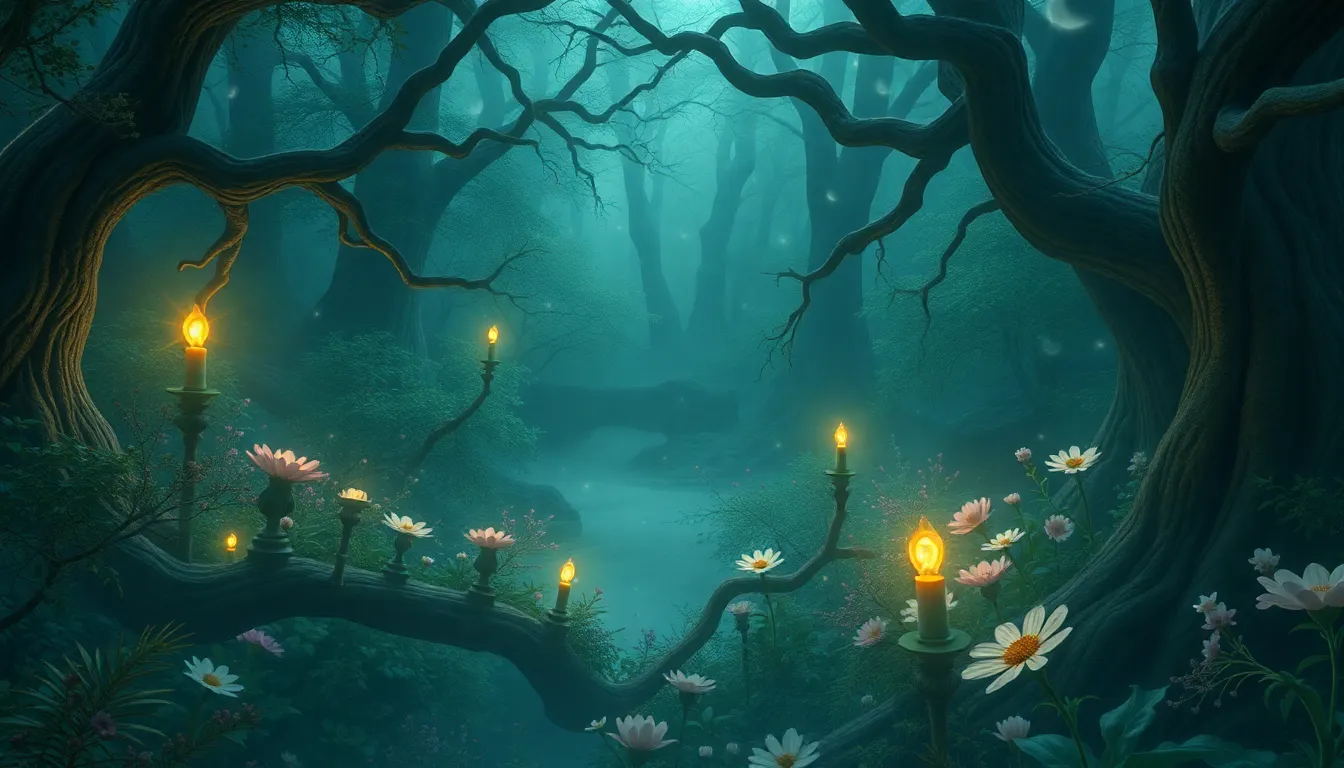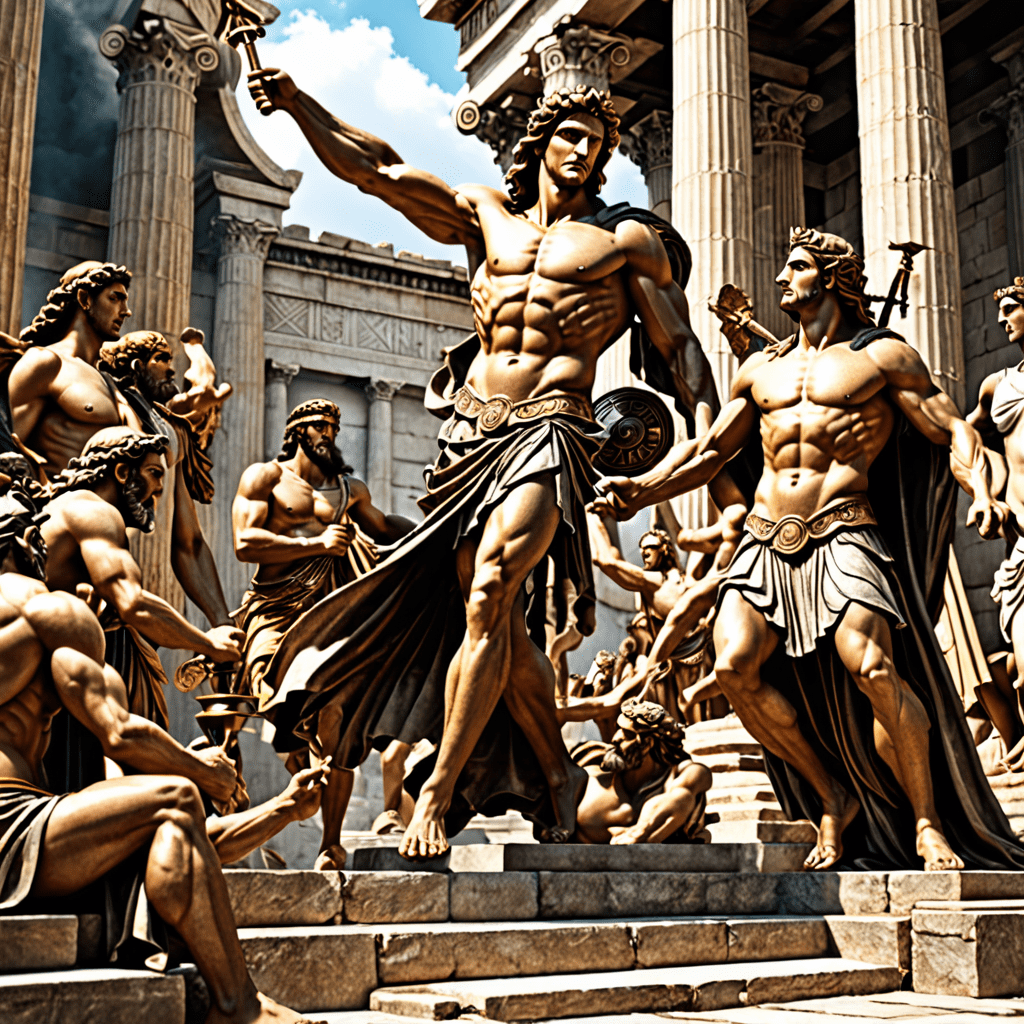The Enchanted Garden: Myths of Nature’s Magic
I. Introduction to the Enchanted Garden
The concept of an enchanted garden evokes images of lush greenery, vibrant flowers, and a sense of magic that transcends the ordinary. Enchanted gardens, found in various cultures, often symbolize a connection to nature’s mysteries and the divine. They are spaces where the boundaries between the natural world and the supernatural blur, allowing for a rich tapestry of myths and legends to flourish.
Throughout history, nature has been intertwined with magic and folklore. From tales of fairies dancing under moonlit skies to the healing properties of herbs, these narratives celebrate the profound relationship between humanity and the natural world. This article aims to explore the myths surrounding enchanted gardens, their historical context, cultural interpretations, symbolism, and their relevance in contemporary society.
II. Historical Context of Enchanted Gardens
Enchanted gardens have roots in ancient civilizations, where reverence for nature was paramount. Cultures such as the Egyptians, Greeks, and Romans celebrated gardens not merely as aesthetic spaces but as sacred sites imbued with spiritual significance.
- Ancient Civilizations: For the Egyptians, gardens were places of worship and reflection, often associated with deities like Osiris.
- Mythological Gardens: The Hanging Gardens of Babylon, one of the Seven Wonders of the Ancient World, is a prime example of how gardens were perceived as magical and extraordinary.
- Evolution of Gardens: Over the ages, the concept of enchanted gardens evolved, influenced by cultural exchanges, artistic movements, and philosophical ideas.
III. Cultural Interpretations of Nature’s Magic
Different cultures have unique interpretations of nature’s magic, often reflected in their folklore and traditions.
- European Folklore: In many European fairy tales, enchanted gardens serve as settings for transformative events, where protagonists encounter magical beings and experience personal growth.
- Eastern Philosophies: In Eastern traditions, gardens symbolize harmony and balance, often designed to reflect spiritual principles such as Zen Buddhism.
- Indigenous Beliefs: Many indigenous cultures regard natural spaces as sacred, believing that spirits inhabit these areas, making them vital for cultural identity and spiritual practices.
IV. Symbolism of Plants and Flowers in Mythology
Plants and flowers hold significant symbolic meanings in various mythologies. They are often seen as conduits of magic and emotion.
- Folklore Plants: Certain plants, like mandrake and wolfsbane, are steeped in lore, often associated with protection, healing, or danger.
- Flowers as Symbols: Flowers like roses symbolize love, while lilies often represent death and rebirth, illustrating the cyclical nature of life.
- Herbal Magic: Herbs have been attributed magical properties, used in rituals for healing, protection, and spiritual guidance throughout history.
V. Elemental Forces and Nature Spirits
The idea of elementals—spirits associated with natural elements—is prevalent in folklore across cultures. These beings often protect and inhabit enchanted gardens.
- Introduction to Elementals: Fairies, dryads, and gnomes are examples of nature spirits believed to govern the flora and fauna of enchanted spaces.
- Guardians of Gardens: Myths often describe these spirits as guardians of gardens, ensuring the balance of nature and protecting the sanctity of their domains.
- Human-Nature Interplay: Stories often depict interactions between humans and nature spirits, highlighting themes of respect, stewardship, and the harmony between mankind and the natural world.
VI. Enchanted Gardens in Literature and Art
Enchanted gardens have captured the imagination of writers and artists throughout history, serving as symbols of mystery and transformation.
- Famous Literary Works: Frances Hodgson Burnett’s “The Secret Garden” is a quintessential example, portraying a garden as a place of healing and renewal.
- Artistic Representations: Throughout art history, enchanted landscapes have been depicted in paintings, sculptures, and textiles, reflecting the beauty and magic of nature.
- Modern Perceptions: These artistic depictions have shaped contemporary views of nature, emphasizing the importance of preserving and cherishing our natural environments.
VII. Modern Interpretations of Enchanted Gardens
In contemporary society, the concept of enchanted gardens continues to evolve, with new interpretations emerging in garden design and ecological practices.
- Garden Design: Many modern gardens draw inspiration from myth and magic, focusing on creating spaces that evoke a sense of wonder and connection to nature.
- Eco-Spirituality: The rise of eco-spirituality has led to a renewed interest in enchanted spaces, encouraging individuals to reconnect with nature for spiritual and emotional well-being.
- Case Studies: From community gardens to botanical sanctuaries, various projects worldwide exemplify the magical qualities that enchanted gardens can embody.
VIII. The Role of Nature in Personal and Spiritual Growth
Spending time in nature, particularly in enchanted gardens, has therapeutic effects that can enhance personal and spiritual growth.
- Therapeutic Effects: Engaging with nature has been shown to reduce stress, improve mood, and promote overall well-being.
- Mindfulness Practices: Mindfulness in gardens encourages individuals to immerse themselves in their surroundings, fostering a deeper connection with nature.
- Personal Anecdotes: Many individuals share transformative experiences in gardens, where moments of reflection and inspiration often lead to personal breakthroughs.
IX. Conservation and the Future of Enchanted Gardens
As the world faces environmental challenges, the preservation of enchanted gardens and natural spaces becomes increasingly important.
- Preserving Natural Spaces: Enchanted gardens are vital ecosystems that support biodiversity and cultural heritage, necessitating conservation efforts.
- Community Initiatives: Various community-led projects aim to create and maintain enchanted gardens, fostering local engagement and appreciation for nature.
- Educational Role: Promoting environmental education can cultivate a sense of responsibility towards nature, inspiring future generations to cherish and protect these magical spaces.
X. Conclusion: Rediscovering the Magic of Enchanted Gardens
Enchanted gardens serve as powerful symbols of nature’s magic, reminding us of the deep connections we share with the natural world. As we explore their myths and meanings, we uncover the rich tapestry of cultural beliefs and historical contexts that shape our understanding of these magical spaces. In a rapidly changing world, the importance of preserving and celebrating enchanted gardens cannot be overstated. By reconnecting with nature, we not only enrich our lives but also honor the timeless magic that has captivated humanity for centuries.



